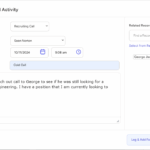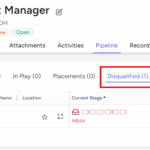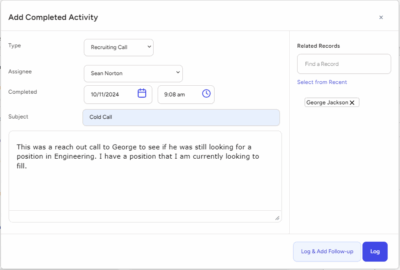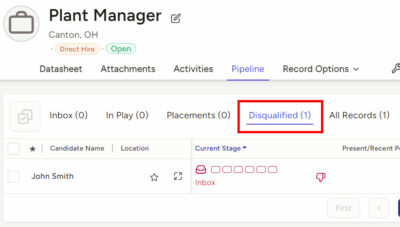In a job market overflowing with expired or fake listings, candidates often face significant challenges in finding legitimate opportunities that match their skills. The abundance of job postings makes it difficult for talented individuals to navigate the noise, and as a recruiter, your goal is to create listings that stand out.
In this article from Top Echelon Recruiting Software, we present four essential strategies to ensure your job listing grabs the attention of qualified candidates.
1. Make It Simple and Accessible
Job seekers today are navigating an overwhelming number of postings, and they need clarity and simplicity. On average, job applicants submit 27 applications for each interview they land. By the time they secure a role, they may have combed through hundreds of job descriptions, leading to a kind of job listing fatigue. With this in mind, it’s critical to make your job listings easy to understand, concise, and straightforward.
Instead of relying on flashy or overly creative job titles, focus on clear titles that reflect the core role and are likely to show up in candidates’ searches. Use industry-standard terminology so your job doesn’t get lost among other listings. An efficient job listing contains well-organized and easily digestible information. For instance, instead of a dense paragraph of responsibilities, break the content into bullet points to make it easier to scan.
Another important aspect is optimizing for search engines and job boards. Leveraging your applicant tracking system’s (ATS) recruitment automation features can ensure your listing reaches the right people by focusing on key search terms. ATS systems help screen out unqualified candidates, but that screening process is ineffective if qualified candidates cannot even find your listing in the first place.
Updated Information:
With the rapid rise of remote work and hybrid job options, it’s important to explicitly mention these opportunities in your job listings. Today’s candidates are often prioritizing flexibility and work-life balance over salary alone. Clear, accessible language should highlight whether the job is remote, in-person, or hybrid, which will help you attract candidates who value those work conditions.
2. Make It Human
Remember that candidates are real people, with real concerns, experiences, and aspirations. Too often, job listings fall into the trap of sounding impersonal or overly technical, alienating talented candidates. You’re not just recruiting a “resource” or “ideal candidate,” you’re reaching out to individuals like Mark, who might have been laid off, or Rachel, who’s ready for a new challenge. The language in your job listing should reflect this human aspect.
One effective strategy is to write the job description in the second person, using “you” instead of impersonal phrases like “the ideal candidate will possess.” This allows candidates to envision themselves in the role, creating a sense of connection. Instead of listing rigid qualifications, try describing what success in the role looks like and how the position can help them grow personally and professionally.
Moreover, modern job seekers are increasingly looking for organizations whose values align with their own. Use your listing as an opportunity to showcase the company’s mission and culture, emphasizing inclusivity, growth, or community involvement. This human-centered approach can build trust and resonate with candidates on a deeper level.
Updated Information:
A 2023 study by LinkedIn found that candidates are more likely to apply to companies that prioritize employee well-being, diversity, and social responsibility. Including details about how your company supports these areas will appeal to a growing number of job seekers who are motivated by more than just compensation. Sharing testimonials from current employees or showcasing team dynamics in your job posting can also give candidates a clearer picture of what it’s like to work at your organization.
3. Make It Exciting
Your job listing should not only convey the details of the role but also inspire enthusiasm. In many cases, job seekers are less driven by salary alone and more by the unique challenges and growth opportunities a position offers. While compensation is a crucial factor, it’s the excitement and potential of the role that will initially capture attention.
Frame the position as an exciting opportunity for career growth or a chance to work on innovative projects. Candidates are drawn to challenges that will allow them to expand their skills and take on new responsibilities. Instead of focusing solely on the tasks at hand, emphasize the broader impact that their work will have on the company or industry. Highlighting unique aspects of the job—such as creative autonomy, leadership opportunities, or the chance to work with cutting-edge technologies—will draw in those who thrive on challenge and innovation.
Additionally, job listings that convey a sense of company culture and team dynamics are more engaging. For instance, if your company hosts regular innovation sessions, promotes from within, or offers mentorship programs, include these perks. Candidates want to feel like they’re joining not just a company, but a community.
Updated Information:
With the job market shifting toward candidate-centric recruiting, it’s more important than ever to make the role itself feel exciting. The post-pandemic workforce is placing greater emphasis on meaningful work. A report by Deloitte highlights that 71% of millennials expect to leave their current job by 2025 due to lack of growth or purpose. Highlighting how the role contributes to larger company goals, or addressing how the job allows candidates to contribute to societal change, can make your listing stand out.
4. Make It Achievable
Candidates are often intimidated by overly complex job descriptions that include long lists of qualifications and years of experience. They may choose not to apply for roles they feel underqualified for, even if they meet 90% of the requirements. As a recruiter, your goal is to attract qualified candidates, but creating an unrealistic or overly ambitious list of must-haves could deter great talent.
To avoid this pitfall, clearly differentiate between required qualifications and preferred or nice-to-have skills. By doing so, you invite candidates to apply even if they don’t meet every criterion, ensuring you capture candidates who may be a strong fit but lack one or two specific qualifications. Great candidates often fall into this “fringe” category, meaning they bring valuable skills that weren’t necessarily on your radar.
Being transparent about what is negotiable and what is not helps candidates feel more confident in applying. A practical, approachable job listing, rather than an intimidating one, can significantly expand your talent pool.
Updated Information:
According to a 2022 study by Harvard Business Review, many job listings discourage potential applicants—particularly women—from applying if they don’t meet 100% of the listed requirements. In response, recruiters should evaluate whether they are placing unnecessary barriers in their job descriptions. Reconsider language that feels exclusionary and revise the tone to encourage a diverse range of applicants.
Leveraging Technology to Amplify Your Job Listing’s Reach
Beyond writing an excellent job listing, leveraging the right technology can help ensure your posting reaches as many qualified candidates as possible. Recruiting software like an ATS (Applicant Tracking System) can distribute your job posting to multiple job boards, helping it get in front of more eyes. In addition, these systems often come with branded career portals, which allow job seekers to engage with your company directly through your website.
ATS platforms also allow recruiters to track engagement, measure the effectiveness of their job postings, and make adjustments accordingly. You can use data analytics to determine how many qualified applicants are viewing and applying to your listings, making it easier to fine-tune your approach.
Updated Information:
In the digital age, it’s important to ensure your job postings are optimized for mobile. Recent studies show that over 50% of job seekers use their mobile devices to search for jobs. Ensuring that your listings are mobile-friendly—meaning concise, clear, and easily navigable—will help you engage today’s increasingly mobile-first workforce.
Creating Job Listings That Connect with Top Talent
In a crowded and competitive job market, making your job listings stand out to qualified candidates requires a combination of clarity, human connection, excitement, and realism. By crafting listings that are simple yet impactful, engaging on a personal level, and enticing with opportunities for growth, you’ll attract the kind of talent your company needs. Moreover, by leveraging technology and being mindful of how your listings are presented across platforms, you’ll maximize your reach and ensure that the right candidates find your opportunity.
As the landscape of recruitment continues to evolve, recruiters who can adapt their listings to meet the needs and expectations of today’s job seekers will be better positioned to win the best talent.








